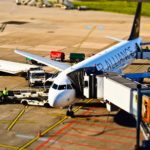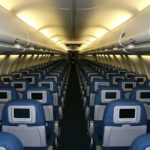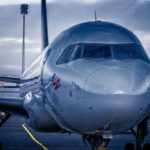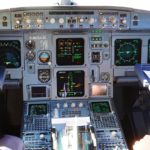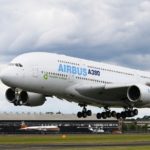In general, aircraft cleaning products are substances and tools used to remove dirt, dust, and stains from the aircraft passenger cabin and cockpit. These tools and products are also used for the purpose of removing offensive odour and avoiding the spread of dirt and contaminants on your aircraft.
Although a vast majority of aircraft cleaning products claim to be best. However, the overall cleaning results can be enhanced when suitable cleaning equipment is used alongside.
Caution: Refer to your aircraft manufacturer guidelines when choosing a cleaning product.
Product Types
Some cleaning products are specially designed to kill bacteria however others, called degreasers, contain organic solvents to help dissolve oils and fats.
Aircraft Cleaning Products In Summary
Some examples of cleaning products that are in high demand in the aircraft market today are the following:
1. Glass Cleaners (Also know as Aircraft Windows Cleaning Solutions)
Glass cleaners are basically used for removing dirt, dust, fingerprints, bacteria, and virus traces off the aircraft cabin window glasses. Glass cleaners come both in liquid-based sprays form and wet wipes forms. Both these cleaning products come as a standalone detergent-based for cleaning purposes only and with antibacterial and antiviral properties deep cleaning such as coronavirus disinfectant.
Usage
Before applying the solution, wipe the access dist off the glass with the help of a clean dry cloth or aircraft glass dust suction machine. Instead of spring directly on the screen, use a clean cloth moistened with water.
2. Screen Cleaners (Also know as Aircraft LCD Cleaning Solutions)
Screen cleaners are used for removing dirt, fingerprints, and dust off the aircraft LCD screen locate aircraft passenger cabin or in the cockpit. As a matter of fact, a good quality screen cleaner can be used for multipurpose cleaning i.e. Aircraft LCD displays, PC, TV, and similarly for other kinds of LCD and plasma screens. Remember the general glass cleaners have anti-glare coatings, therefore, can damage the monitor screen.
Usage
Before applying the solution, wipe the access dist off the screen with the help of a clean dry cloth. Instead of spring directly on the screen, use a clean cloth moistened with water.
3. Vacuum Cleaners (Coupled With Cleaning Brushes)
Computer vacuum cleaners and brushes are particularly helpful tools to extract dirt and dust from the keyboard and hidden parts of the computer. The general household vacuum cleaners can be dangerous for the circuit board of a computer unless they have antistatic safety features.
Usage
Backpack vacuum cleaners are commonly used for aircraft cleaning, this helps the cleaning technician to easily maneuver in the confined space of aircraft passenger cabin and cockpit. They are essentially small canister vacuums strapped onto the user’s back.
4. Carpet Cleaners (Also know as Aircraft Dry/Wet Carpet Cleaners)
Carpet laid in the aircraft passenger cabin gets most contamination and dust due to high traffic and therefore requires special attention. For a quick cleaning during the transit or short stay during the flights at the airport dry carpet cleaning is a suitable option. On other occasions, during a scheduled deep cleaning widow you may be required to deep clean, shampoo carpet, steam clean, and disinfectant the aircraft carpet.
Usage
Choosing the right carpet cleaning product will ensure greater cleaning results and will reduce the danger of damage to your expensive aircraft carpet.
5. Floor Cleaners (Also know as Aircraft Hardfloor Cleaners)
There is also a wide variety of floor cleaning machines available today such as aircraft floor buffers, automatic floor scrubbers and sweepers, and carpet extractors. Each of these aircraft floor cleaning products is for special use, this ensures you clean the right aircraft floor type with the right floor cleaner.
6. Toilet (Coupled With Cleaning Brushes)
Usage
Toilet cleaners tend to be toxic and must be treated with care as they contain disinfectants which can cause skin irritations.

